La Gan is the French name Lagar of the old Binh Thanh land. This is a place of peace and prosperity for a time. People compare La Gan to a miniature Hoi An. On the shore, boats are bustling with trade, under the sea there are many fish and shrimp. After a hundred years, La Gan land is no longer as prosperous as before, but La Gan cape still has blue sky and white clouds, poetic and charming scenery, beside the immense ocean waves.
The journey to La Gan cape to rediscover the past was made on a sunny and windy day in early April. Our first destination was a small bay, where in the dry season, fishing boats of fishermen from localities such as Lien Huong and Phuoc The come to rest after long days of fishing. In the morning, the scenery is extremely beautiful. Boats of all kinds are parked at the wharf, colorful basket boats add to the lively and bustling atmosphere. Looking far away, rotating wind turbines add to the shimmering and magical atmosphere.
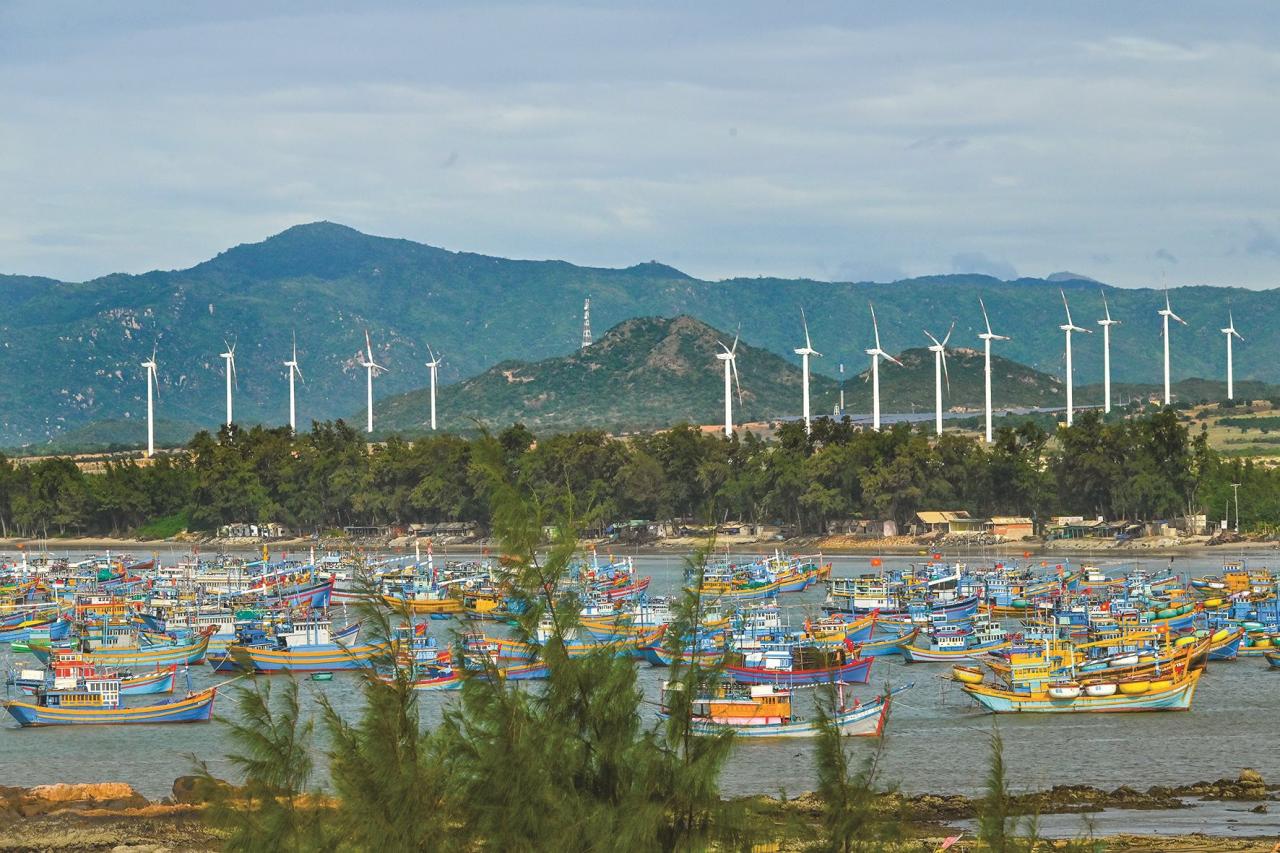
Moving forward is Binh An communal house, which is the place to worship the village's tutelary god and is ranked as a national architectural and artistic relic. With the shape of "Phoenix drinking water" with its back leaning on the sand dune and facing the sea, Binh An communal house is considered a large and beautiful communal house, typical of the folk architectural and artistic style in Binh Thuan .
The communal house has 11 roofs connected together and forming a large complex, each building has a separate function, located on an area of 1,400 m2 surrounded by thick stone walls. The roofs of the communal house are connected to each other: the main communal house, the central communal house, the main worship house, the left side, the right side, the three-entrance gate, the Ancestor worship house, the shrine to worship soldiers through the ages. After hundreds of years, Binh An communal house still has its unique features and is a tourist destination for visitors from all over the world.
Past Binh An communal house, across the small sand dune is Nam Hai mausoleum. Like Binh An communal house, Nam Hai mausoleum in Binh Thanh is also a unique architectural complex that few places have. Every year, Nam Hai mausoleum organizes a performance of Ho Ba Trao in the fishing ceremony, which is very special and imbued with regional culture. The mausoleum was built during the reign of King Minh Mang in the period of 1820-1840. With the terrain of Thuy tu son trieu, meaning there is water flowing to converge on the undulating sand dunes surrounding both sides, in the Southeast - Northwest direction, standing on the beautiful beach.
Having gone through many historical events, the mausoleum still retains many cultural values and Binh Thanh people have a folk song by heart:
June calendar to worship the Lord
Who goes somewhere misses to come back.
About 300m from Nam Hai Tomb is a place called Gieng Liet. This is a small rocky beach but has a freshwater well right next to it. The reason people call it Gieng Liet is because this area has a lot of oil fish, a specialty of Tuy Phong sea. There are many types of fish but the best is still oil fish. The meat of oil fish is very delicious, fragrant, sweet, and fatty. There are 2 ways to prepare this specialty fish: grilled and cooked in soup. Next to a vast white sand area, mixed in with it is the light green color of the grass. In this season, the grass is about to separate and fly a lot on the sand dunes, creating a truly peaceful and gentle scene. The grass is the grass of childhood and it also evokes romance with some first love. Looking at the grass on the sand, below are the waves lapping the shore, a feeling of nostalgia and excitement mixed in the soul.
Just past the emotional grass field is Thuong Chanh beach, which the locals also call the outer beach. The name Thuong Chanh beach dates back to the French colonial period, because the French set up a control station here and collected taxes from people trading and selling through this place, especially the boat traders along the North-South sea. Thuong Chanh is a beautiful small beach, covered by cool green pine forests, with gentle waves and clear blue water, very suitable for swimming and picnicking. It is far from Binh Thanh tourist area and far from residential areas, so it is still wild and quiet.
Past the Thuong Chanh beach, over the rocky and jagged sand slopes, we will reach a place called Hoc Dong Chung. This is a small strait with very beautiful scenery. In the past, this area was famous for barracuda, especially fragrant barracuda, some weighing more than a kilogram. Hoc Dong Chung has a landscape quite similar to Ganh Hang in Phu Quy, because this place has not been exploited for tourism so it is still very wild.
As we have gone through, the road to La Gan cape is wild and has not been affected by humans. Everything is still intact as it was. There are still names that are both strange and familiar, both old and familiar. At La Gan cape, there are still Hon O, Hon Yen and there are Hon Tai and Cape Cay, all of which have created a strangely charming La Gan.
In the distance, the wind blowing into La Gan Cape grew stronger, each wave crashing against the rocky shore, creating white foam. The squid fishing boats looked like they were about to fall over, but the fishermen remained steadfast with each gust of wind. As the sun rose, La Gan Cape became more beautiful in the eyes of the beholder. Perhaps one day soon, the road to La Gan Cape will be as beautiful as the road to Mui Ne and Hon Rom.
Source




![[Photo] President of the Cuban National Assembly visits President Ho Chi Minh's Mausoleum](https://vphoto.vietnam.vn/thumb/1200x675/vietnam/resource/IMAGE/2025/10/1/39f1142310fc4dae9e3de4fcc9ac2ed0)

![[Photo] Keep your warehouse safe in all situations](https://vphoto.vietnam.vn/thumb/1200x675/vietnam/resource/IMAGE/2025/10/1/3eb4eceafe68497989865e7faa4e4d0e)
![[Photo] Hanoi morning of October 1: Prolonged flooding, people wade to work](https://vphoto.vietnam.vn/thumb/1200x675/vietnam/resource/IMAGE/2025/10/1/189be28938e3493fa26b2938efa2059e)
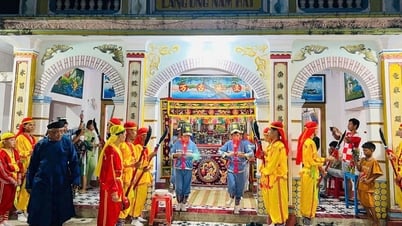

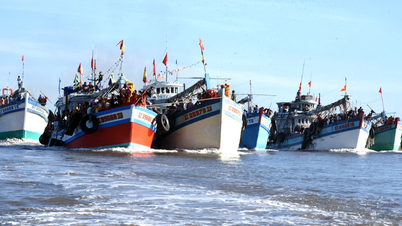


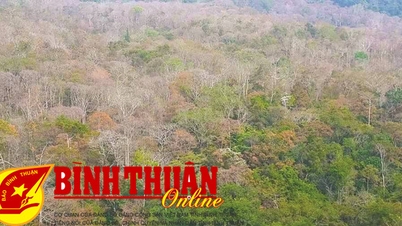





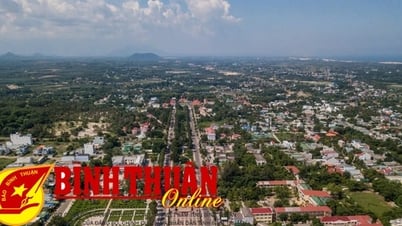













































































Comment (0)